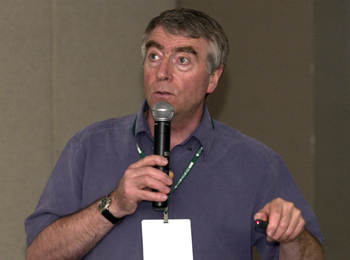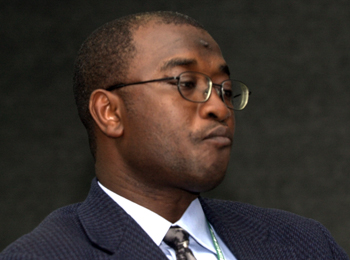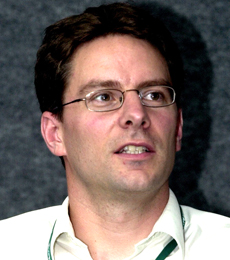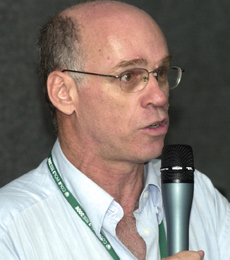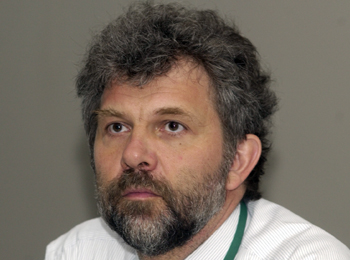 |
||
|
published by IISD, the International Institute for Sustainable Development
in cooperation with the CBD Secretariat |
|||
|
A Special Report on Selected Side Events at CBD COP-8
|
|||||
| 20-31 March 2006 | Curitiba, Brazil | |||||
 |
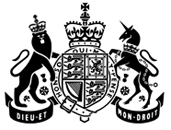 |
||||
 |
|||||
|
United Kingdom Foreign & Commonwealth Office
|
|||||
Events convened on Thursday, 23 March 2006
|
European Research Results Contribution to CBD Implementation Presented by the European Commission |
|||
|
Karin Zaunberger, European Commission, explained that the five panel members were coordinators of five major European research projects currently supported by EU funding of approximately €60 million, which facilitate implementation of the CBD’s work programmes and action plans to combat the ongoing loss of biodiversity. Phil Weaver, Coordinator of the Hotspot Ecosystem Research on the Margins of European Seas project (HERMES), emphasized the urgency of understanding deep-sea ecosystems and how they function; of determining their variability; of doing so before they are altered by man; and of translating this research into policy as rapidly as possible. He stressed awareness-raising, mentioning the schools outreach projects currently being run by HERMES. Carlo Heip, Coordinator of Marine Biodiversity and Ecosystem Function (MARBEF), outlined results of the MARBEF project which aims to explain the relationship between biodiversity and ecosystem functioning and understand human impacts. He referred to the Pelagia Effect where in the early 1980s the Mediterranean was filled with abnormally large populations of jellyfish, probably due to over-fishing. Josef Settele, Coordinator of the Assessing Large-Scale Environmental Risks on Biodiversity with Tested Methods project (ALARM), explained they are working towards a Risk Assessment Toolkit (ALARM RAT) to obtain up-to-date information on large-scale environmental risks for biodiversity, in particular the risks of climate change, biological invasions, pollinator loss, and environmental chemicals. Describing the activities of the recently launched European Distributed Institute of Taxonomy (EDIT), Simon Tillier, Coordinator of EDIT, said the key issues facing research in taxonomy include: the uneven distribution of capacities and taxa; unevenly distributed biodiversity and information; and the unavailability of information and knowledge. Discussion: One participant announced the launch of the Catalogue of Life during CBD COP-8. Another questioned how the disparate research projects would be integrated, with panellists explaining that this could be addressed within the Life Watch Project, aiming to establish a unified system of measurements, but acknowledging that this is a long path. Participants discussed how to facilitate communication between scientists and policy makers. |
|||
|
|||
|
Biological Diversity in Dry and Sub-Humid Lands for Human Well-Being Presented by the Consultative Group on International Agricultural Research (CGIAR) |
|||
|
Emile Frison, International Plant Genetic Resources Institute, gave an overview of the 15 global future harvest centers supported by the CGIAR. He explained that their role is to produce international public goods knowledge by holding varieties of crop samples important to dry areas such as sorghum, wheat, chick peas, barley and groundnut. Highlighting the importance of diversity for breeding, he gave examples of activities in West Africa, focusing on adaptive traits in animal breeding like resistance to disease, and in Asia on the “Decision Support Tool’ which allow prioritization of breed conservation and utilization while maximizing human livelihood benefits. Jan Valkoun, International Center for Agricultural Research in the Dry Areas (ICARDA) elaborated on the dryland agrobiodiversity project in Jordan, Lebanon, the Palestinian Authority and Syria which focuses on conservation of landraces and wild relatives of barley, wheat, lentil alliums, feed legumes and fruit trees. He said ICARDA was conserving 30,000 wild species in gene banks to be used in breeding research and restoration of the ecosystem. Mohamed Bakarr, World Agroforestry Centre, said agroforestry creates livelihood options for poor farmers while playing a key role in the conservation of biodiversity. He also noted that agroforestry puts trees in working landscapes to enhance food security, income generation and sustainability. He highlighted the role of agroforestry in biodiversity conservation which is to reduce pressure on natural resources and maintain genetic diversity of both in situ and ex situ exploited species. Giving shade coffee as an example in Eastern Africa and Asia, he explained how it had diversified options for livelihoods and created habitats for other species, adding that farmers should be recognized and rewarded for such innovations in land use practices. |
|||
Mohamed Bakarr, World Agroforestry Centre, emphasized the importance of engaging agroforesters in landscape conservation management and the need for participatory processes for integrated natural resource management
|
|||
|
The 2010 Biodiversity Indicators Partnership – Progressing Towards 2010 Presented by the UNEP-World Conservation Monitoring Centre (WCMC) |
||
|
Jon Hutton, UNEP-WCMC, introduced the 2010 Biodiversity Indicators Partnership (2010BIP) aimed at strengthening the linkages between global, regional and national 2010 indicators and other processes, noting that this is the lead source of information on trends in biodiversity.
Describing the 2010BIP project, Neville Ash, UNEP-WCMC, noted that the first phase (2006-2008) focuses on indicator development and the second one (2009-2012) on 2010 reporting and beyond. Noëlle Kümpel, The Zoological Society of London, presented the IUCN Species Survival Commission’s work on species indicators which feeds into four out of the seven CBD 2010 Target Focal Areas, namely the status and trends of biodiversity, sustainable use, threats to biodiversity, ecosystem integrity, and ecosystem goods and services. On the 2010BIP project, Linda Collette, FAO, noted that FAO is developing indicators on genetic resources, with ex situ crop collection, livestock genetic resources, fish genetic resources, and tree genetic resources as sub-indicators; on sustainable use, with focus on forestry and agricultural ecosystem products derived from sustainable sources; and on food and medicine, looking at consumption and composition. Gordon McInnes, European Environment Agency (EEA), described the Streamlining European 2010 Biodiversity Indicators project and how it contributes to the 2010BIP project. Nick Davidson, Ramsar Convention on Wetlands, emphasized that the 2010BIP is oriented towards facilitating the work of biodiversity-related conventions while strengthening collaboration, and added that Ramsar has identified additional indicators. Discussion: Robert Hoft, CBD Secretariat, highlighted that the Global Biodiversity Outlook-2 outlines progress on the availability of indicators and that parties are called upon to develop national indicators. |
||
|
|||
|
|||
|
The Social Impacts of the New Biodiversity Networks and the Launch of the Global Forest Coalition Report on Monitoring of Forest Related Commitments Under the UNFCCC Presented by the Global Forest Coalition (GFC) |
||
|
Lambert Okrah, Institute of Cultural Affairs, Ghana, announced the launch of the GFC report titled “4.1(d) Climate and Forest Change. Report on Independent Monitoring of the Implementation of Article 4.1(d) of the UNFCCC.”
Sharing the results of the Brazilian section of the GFC Report, Rubens Born, Vitae Civilis, stated that 73% of the Brazilian green house gas emissions relate to deforestation and the 70 to 80% of deforestation in Brazil is illegal. Elizabeth Bravo, Acción Ecológica, Ecuador, described some of the severe negative impacts on indigenous communities and farmers of transforming nature into a commodity through practices and policies such as the sequestration of CO² and corporate contracts for timber exploitation, bioprospecting and tourism. Questioning the economic approach to protected area management, Simone Lovera, GFC, criticised the big business of biodiversity offsets. She said the market-based approach overlooks the fact that many communities conserve biodiversity for its own sake, urging this approach on a global level. Sandy Gauntlett, Pacific Peoples Environment Coalition, Aotearoa, New Zealand, described New Zealand’s rapid forest loss since the arrival of Europeans, and the devastating effects that have occurred due to the Maori people’s buying into the privatisation of resources. Liyakhat Syed, Equations, India, cautioned that ecotourism has become a guise for high-impact tourism operations in sensitive areas, often with the tacit support of government agencies with a mandate to protect those areas. He presented the example of the Andaman Islands and Tamil Nadu, both prone to tsunami and earthquakes, which have been impacted by ecotourism while receiving marginal local benefits. |
||
|
|||
|
The First International Technical Conference Animal Genetic Resources and the First Report on the State of World’s Animal Genetic Resources Presented by the Food and Agriculture Organization (FAO) and the Government of Switzerland |
|||
|
On the process and development of a global strategy for the management of farm animal genetic resources, Irene Hoffmann, Animal Production and Health Division, FAO, indicated that this process is geared towards providing a framework to guide international efforts on animal genetic resources (AnGR), a new issue for many, and to assist countries to better manage their genetic resources. Hoffman indicated that work on plant genetic resources is at an advanced stage, with the International Treaty for Plant and Genetic Resources for Food and Agriculture as a legal instrument, whereas AnGR lacks such an instrument. She emphasized major differences between both, while ex-situ conservation of plant genetic resources is relatively easy and there is uniformity within varieties or lines, the conservation of AnGR is mainly done in-situ by local communities and farmers with genetic variation within and between breeds. Noting the ongoing work for the preparation of the First Report on the State of the World’s Animal Genetic Resources, Hoffman said it has led to an increase of available data, with breeds classified between local and transboundary, and further noted that France and China have the highest number of breeds reported. She indicated difficulties and problems in reporting, stressing that capacity-building is a priority for many countries. François Pythoud, Swiss Federal Office of Agriculture, announced the First International Technical Conference Animal Genetic Resources to be held in September 2007, in Interlaken, Switzerland which will provide an opportunity to reach agreement on how to best address priorities to sustainably use, develop and conserve AnGR. |
|||
|
|
|||
|
||
|
Click the above button to go back to our ENB main coverage
|
||
|
|
|
|
|
||
|

